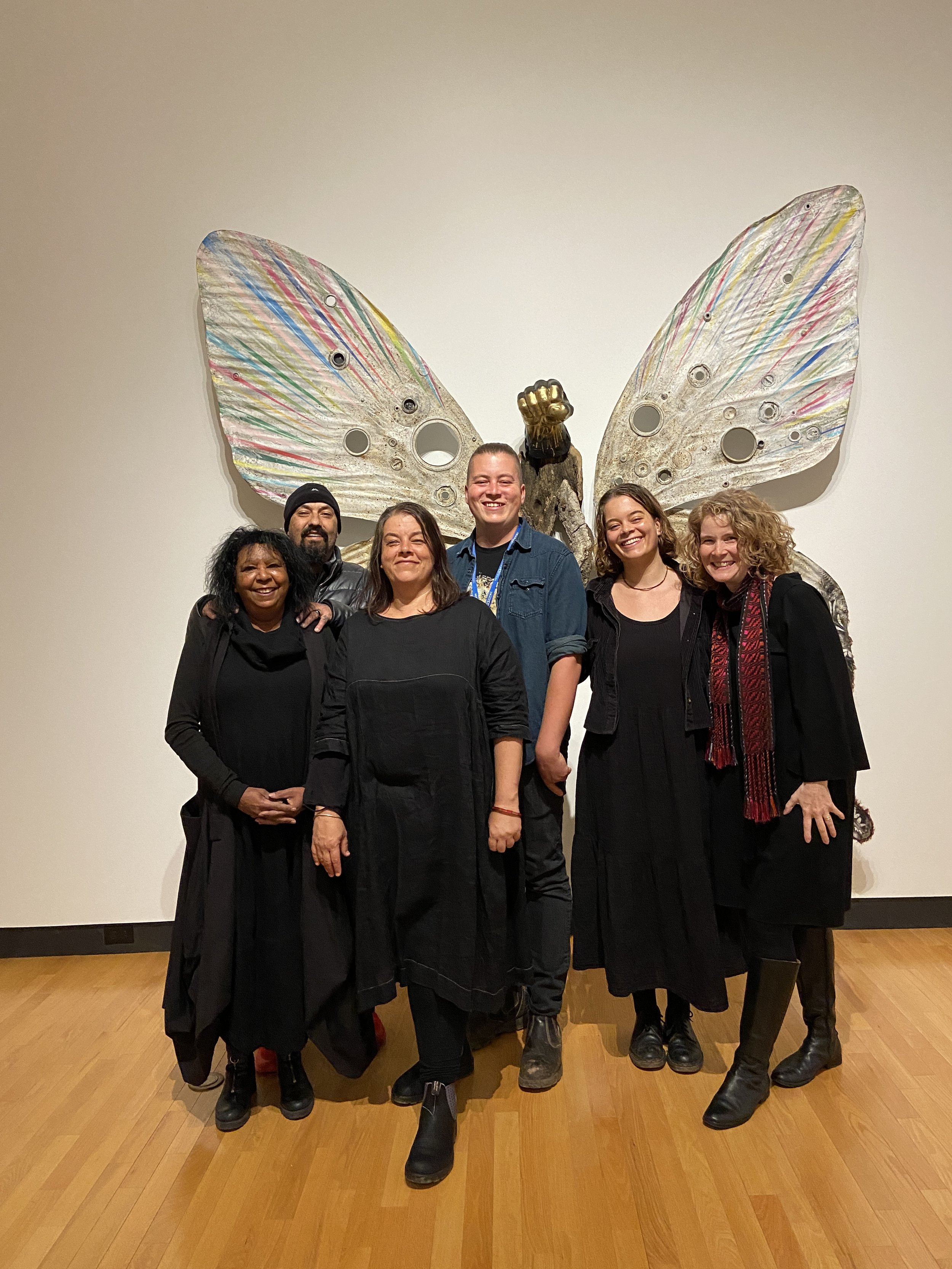By Lily Hoffman Strickler ’23
Staff Writer
Photo by Jenny Yu ‘24
On March 25, 10 pieces of art created by the Spring 2022 Junior Art Studio class adorned the second floor gallery of Blanchard Hall. The show, titled “Evoking Reality: Space and Self,” ran until April 2 and included artwork featuring a wide variety of mediums, ranging from 3D sculptures to digital and acrylic paintings.
According to Associate Professor of Art and Chair of Art Studio Ligia Bouton, the pieces featured in the exhibition took three weeks for the artists to complete, with some of the pieces being a mashup of previously completed art projects from earlier in the semester. The exhibition was a walkthrough of the significant aspects of life and creativity for each artist, covering subjects such as the sexualization of women of color, the impact of human life on certain communities and even an ode to a deceased horse. Each piece included a wide range of differing artistic mediums, creating an air of vibrancy and inventiveness that expressed the passion that went into creating each piece of art.
Regarding the process that went into creating the artwork, Bouton explained, “There was no prompt; students were encouraged to follow their own creative trajectories.”
This encouragement of creative freedom was clearly reflected in the art. Each piece served as an in-depth look into the lives, morals and mindsets of the Junior Art Studio artists.
The artwork by Sarah Miller-Bartley ’24, titled “Strawberry Milk,” featured pink-painted plastic cows which were hung loosely in the folds of an equally pink canvas, attached by the canvas’ own threads. As written in Miller-Bartley’s artist statement, it is through this inclusion of both artistic material and mass-produced objects that they explore the hierarchy of art materials, bringing into question the validity of such classification in artistic environments.
Miller-Bartley reflected on what it meant to display artwork at an in-person exhibition after such a long time of not being able to do so because of COVID-19. “It was really exciting to see everyone’s work together, especially after a long period of remote work,” Miller-Bartley said. “It’s satisfying to display a piece in an intentional and more final way, for viewing beyond the classroom.”
For Laura Hinojosa ’23, another Junior Art Studio student, the process of developing her artwork and interest in pop culture began during the pandemic, when she returned home to Lima, Peru.
“Due to the limited ability to leave my apartment building, I used media to entertain myself: watching movies, reading comic books, scrolling through Instagram/Tiktok/Twitter,” Hinojosa recalled.
This increase in Hinojosa’s social media usage led her to begin the process of creating her piece “Olympus,” a mixed digital art piece featuring American singer Doja Cat. According to Hinojosa, the piece is reflective of the stereotyping of women of color in media, and how they have been reclaiming their sexuality over time.
“I became curious once more about media consumption and pop culture when I realized I was engaging with it a lot less,” Hinojosa said.“And so, I began to explore the Pop Art movement — Keith Haring, Yayoi Kusama, Yoshitomo Nara and Andy Warhol.” This rediscovery of pop culture and media led Hinjosa to create an art piece reflective of this thought process.
“Evolving Reality: Space and Self” served as a space for artists to reflect on themselves as individuals through their artwork in a time where much of the outside world and our own inner selves are changing or have changed drastically. It was a personal look into an aspect of life each artist finds significance in, whether it be outward or inward, widely discussed or intimately individualized, all through a largely vibrant and liberally creative atmosphere.

















